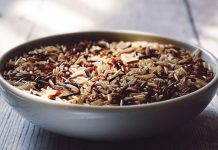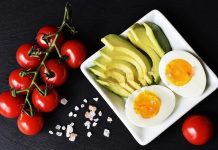In a world where the cost of living seems to rise with each passing day, finding ways to nourish our bodies without breaking the bank has become an art form. “Healthy Meal Planning on a Budget” is not just a guide; it’s a journey into the heart of creativity, where resourcefulness meets nutrition. Imagine a canvas where ingredients are your palette, and each meal is a masterpiece that balances health and affordability. In this article, we will explore the secrets of crafting meals that are as kind to your wallet as they are to your well-being, offering a feast of ideas that prove eating well doesn’t have to be a luxury. Whether you’re a seasoned chef or a kitchen novice, these strategies will empower you to transform humble ingredients into delicious dishes, ensuring that both your body and budget thrive.
Smart Shopping Strategies for Nutrient-Packed Groceries
When navigating the aisles of your local grocery store, a well-thought-out plan can be your best ally in acquiring nutrient-rich foods without overspending. Start by focusing on whole foods that offer the most nutritional value per dollar. Fruits and vegetables, particularly those in season, are often more affordable and fresher, providing essential vitamins and minerals. Don’t overlook the frozen aisle; frozen fruits and veggies are picked at peak ripeness and can be a cost-effective and long-lasting alternative.
To make the most of your budget, consider incorporating these strategies into your shopping routine:
- Buy in bulk: Items like grains, legumes, and nuts can be cheaper when purchased in larger quantities. Store them properly to maintain freshness.
- Opt for store brands: Many generic brands offer the same quality as name brands at a fraction of the cost.
- Plan your meals: Before heading to the store, draft a weekly meal plan to avoid impulse purchases and reduce waste.
- Use coupons and discounts: Keep an eye out for sales and digital coupons, which can significantly lower your grocery bill.

Affordable Ingredients that Maximize Flavor and Nutrition
Crafting nutritious meals without breaking the bank is entirely possible with the right ingredients. Consider incorporating legumes such as lentils and chickpeas, which are not only budget-friendly but also packed with protein and fiber. These versatile staples can be used in soups, stews, and salads to add both substance and flavor. Another cost-effective option is frozen vegetables. They retain their nutritional value and are often more affordable than fresh produce, allowing you to enjoy a variety of vegetables year-round.
- Whole grains: Brown rice, quinoa, and oats are excellent sources of essential nutrients and can be the backbone of numerous dishes.
- Herbs and spices: Investing in a few key spices like cumin, turmeric, and paprika can transform simple ingredients into flavorful meals.
- Eggs: Affordable and nutrient-dense, eggs can be used in a myriad of ways, from omelets to baking.
By focusing on these affordable yet flavorful ingredients, you can maintain a nutritious diet while keeping your grocery bill in check. Experimenting with different combinations and cooking methods will ensure your meals are both satisfying and healthy.

Creative Cooking Techniques to Stretch Your Budget
Transforming everyday ingredients into extraordinary meals can be an artful endeavor, especially when working with a limited budget. Embrace the magic of batch cooking by preparing large quantities of grains like rice or quinoa, which can serve as the foundation for multiple dishes throughout the week. This not only saves time but also money, as buying in bulk often costs less. Additionally, experiment with one-pot meals where ingredients like vegetables, proteins, and starches meld together, creating rich, flavorful dishes with minimal cleanup.
- Flavor Boosters: Utilize herbs and spices to add depth without extra cost.
- Substitution Savvy: Replace expensive ingredients with affordable alternatives, like using lentils instead of ground beef.
- Fermentation Fun: Try fermenting vegetables for an inexpensive, healthy twist on side dishes.

Weekly Meal Prep Tips for Cost-Effective Healthy Eating
Transform your weekly meal prep into a cost-effective and healthy routine with a few strategic tweaks. Begin by planning your meals around seasonal produce and sales. Buying in bulk can also significantly reduce costs, especially when it comes to staples like grains, beans, and nuts. Consider setting aside time each week to batch cook and portion meals. This not only saves money but also ensures you have nutritious options readily available, reducing the temptation to order takeout.
- Embrace leftovers: Incorporate them into new dishes or freeze for later use.
- Use versatile ingredients: Think of items like eggs, beans, and spinach that can be used in multiple recipes.
- DIY snacks: Prepare your own granola bars or trail mix to avoid the markup on pre-packaged snacks.
- Invest in reusable containers: They make portion control easier and reduce waste.
By adopting these practices, you not only make your meal prep more economical but also healthier. The key is to be flexible and creative with your ingredients, allowing you to enjoy diverse meals without breaking the bank.
Closing Remarks
As we wrap up our exploration of healthy meal planning on a budget, it’s clear that the journey to nutritious and affordable eating is both an art and a science. With a dash of creativity and a sprinkle of resourcefulness, you can transform your kitchen into a haven of wholesome, budget-friendly meals. Remember, it’s not just about the cost of ingredients but the value they bring to your table. By prioritizing seasonal produce, embracing bulk buying, and crafting a weekly menu, you’re not just saving money—you’re investing in your well-being. So, let your culinary adventures begin, armed with the knowledge that eating well doesn’t have to break the bank. Bon appétit to a healthier, happier you!


































